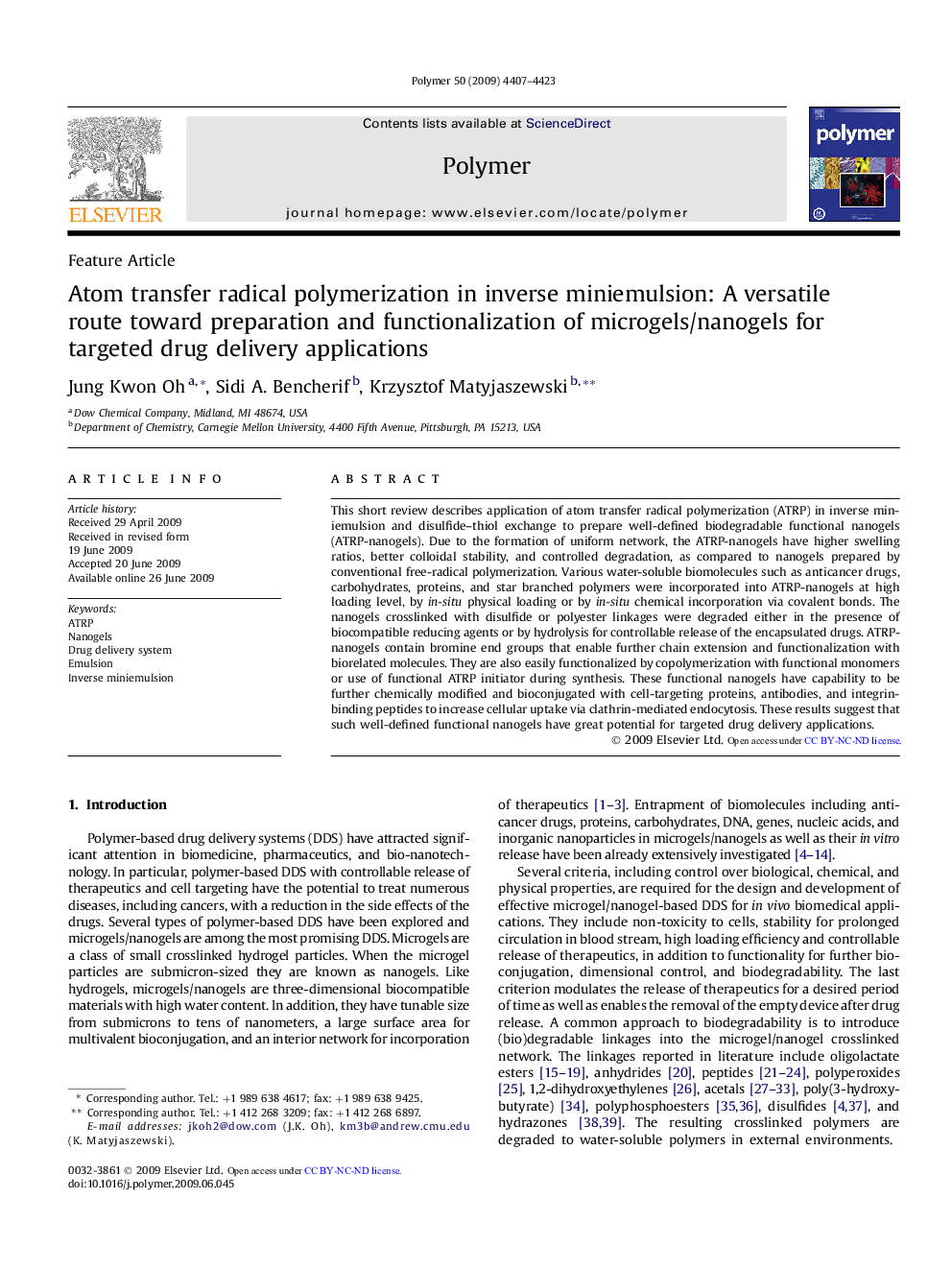| Article ID | Journal | Published Year | Pages | File Type |
|---|---|---|---|---|
| 5184661 | Polymer | 2009 | 17 Pages |
This short review describes application of atom transfer radical polymerization (ATRP) in inverse miniemulsion and disulfide-thiol exchange to prepare well-defined biodegradable functional nanogels (ATRP-nanogels). Due to the formation of uniform network, the ATRP-nanogels have higher swelling ratios, better colloidal stability, and controlled degradation, as compared to nanogels prepared by conventional free-radical polymerization. Various water-soluble biomolecules such as anticancer drugs, carbohydrates, proteins, and star branched polymers were incorporated into ATRP-nanogels at high loading level, by in-situ physical loading or by in-situ chemical incorporation via covalent bonds. The nanogels crosslinked with disulfide or polyester linkages were degraded either in the presence of biocompatible reducing agents or by hydrolysis for controllable release of the encapsulated drugs. ATRP-nanogels contain bromine end groups that enable further chain extension and functionalization with biorelated molecules. They are also easily functionalized by copolymerization with functional monomers or use of functional ATRP initiator during synthesis. These functional nanogels have capability to be further chemically modified and bioconjugated with cell-targeting proteins, antibodies, and integrin-binding peptides to increase cellular uptake via clathrin-mediated endocytosis. These results suggest that such well-defined functional nanogels have great potential for targeted drug delivery applications.
Graphical abstractDownload full-size image
